$350-Million NSF Agreement Extends Texas A&M Leadership Of IODP Ship Operations
NSF has awarded management and operations of the research drillship to Texas A&M through 2024.
Aug 26, 2019
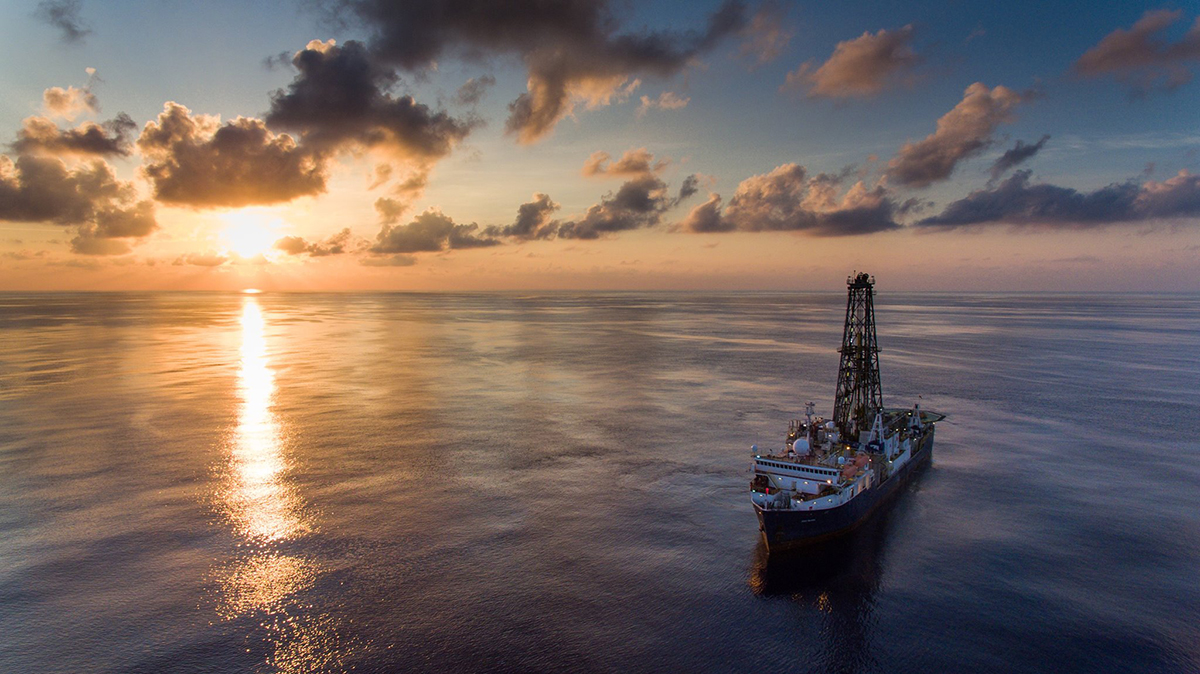
The JOIDES Resolution. (Photo by IODP.)
Earlier this year, the National Science Board (NSB) authorized the National Science Foundation (NSF) to extend funding for Texas A&M University to serve as the Science Operator of the JOIDES Resolution as a facility of the International Ocean Discovery Program (IODP) through Sept. 30, 2024. The new agreement totals more than $350 million over 5 years and is the largest federal research award currently managed by Texas A&M.
A premier scientific research vessel for deep-ocean drilling, the JOIDES Resolution is owned by Siem Offshore’s subsidiary Overseas Drilling Ltd (ODL), which has extended the ship’s charter contract with the Texas A&M Research Foundation through Sept. 30, 2024.
IODP is an international research collaboration that coordinates seagoing expeditions to study the history of the Earth recorded in sediments and rocks beneath the ocean floor. For the past 34 years, Texas A&M has operated the JOIDES Resolution on behalf of NSF.
“The IODP drilling platforms provide the only way for scientists to access the sediments and rocks that lay buried deep beneath the deep seafloor,” JRSO Director Dr. Brad Clement said. “These materials provide a rich archive of changes in the oceans and the planet’s climate, as well as insights into how Earth’s structure has evolved through time. The JOIDES Resolution has been the workhorse of the international drilling programs, conducting expeditions in each of the ocean basins.”
The JRSO is within the College of Geosciences at Texas A&M, and one of IODP’s three main ocean sediment core repositories is also housed at Texas A&M.
“The NSF renewal means that Texas A&M will continue providing the international science community with this important facility and will continue to make important scientific advances in our understanding of our planet,” he said.
“It is an honor and a privilege to serve as the Science Operator for the JOIDES Resolution, and we are thrilled for the opportunity to continue to serve the scientific community through 2024,” Dean of the Texas A&M College of Geosciences Dr. Debbie Thomas said.
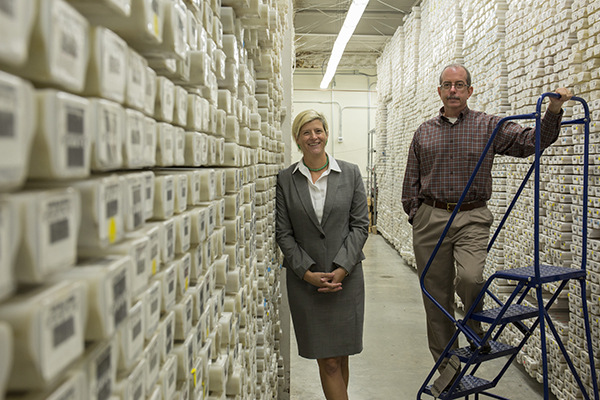
Dr. Debbie Thomas and Dr. Brad Clement. (Photo courtesy of IODP.)
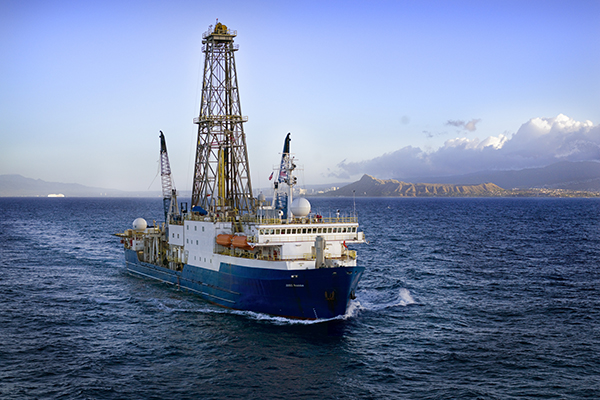
The JOIDES Resolution off the coast of Hawaii. (Photo by courtesy of IODP.)

The JOIDES Resolution docked in St. Johns. (Photo courtesy of IODP.)
“The renewal from NSF is truly a testament to the heroic efforts of everyone on the amazing JRSO team — they perpetually innovate to deliver even higher quality science and higher quality service. Their accomplishments have set an exceptionally high bar for major research programs, and the College of Geosciences is so proud to serve them.”
The JRSO is responsible for overseeing the science operations of the JOIDES Resolution, archiving the scientific data and samples and logs that are collected, and producing and disseminating program publications.
The scientific samples and data are used to study Earth’s past history, including plate tectonics, ocean currents, climate changes, evolutionary characteristics and extinctions of marine life, and mineral deposits. Drilling operations are conducted purely for scientific purposes and do not include oil exploration.
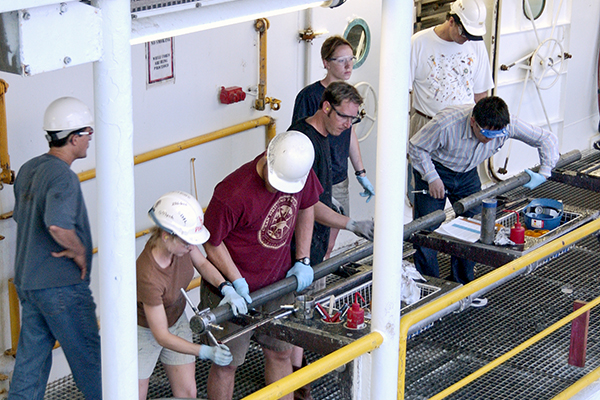
A sediment core being processed on the deck of the JOIDES Resolution. (Image courtesy of IODP.)
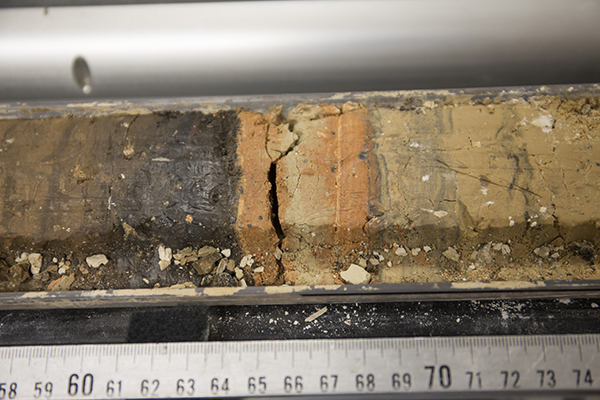
A close-up look at a halved sediment core. (Image courtesy of IODP.)

About the JOIDES Resolution, which is a research vessel 143 meters long: 1) its derrick is 62 meters above the water line; 2) its catwalk is where the cores are sent after drilling; 3) its drill string can reach depths of up to 8,235 meters. (Image by IODP.)
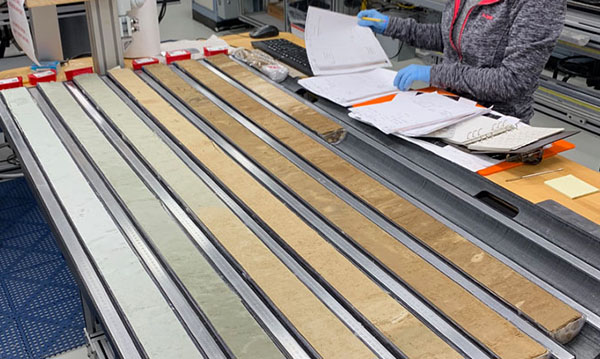
Learn more about IODP’s remarkable scientific contributions.
Read the full NSB Resolution (NSB-2019-3).
By Leslie Lee ’09
